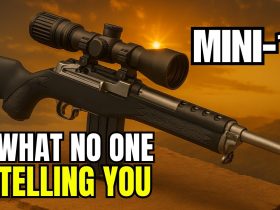The late, great trainer Todd Louis Green once teased me for bringing to class a range bag overloaded with all manner of gear, including two spare pistols.
I’m the sort of belt-and-suspenders person who doesn’t want to risk a class weekend being ruined by a busted gun, Hey, “only lonely guns break.” Although I’d never needed to use one, I always brought a second (and maybe a third) pistol along to gun school, just in case.
Fast forward to the summer of 2015. I was scheduled to take a class with Kathy Jackson of Cornered Cat being held out in the Pacific Northwest at Firearms Academy of Seattle. It was an Instructor Development class, and the syllabus called for bringing a semi-automatic pistol and a revolver, as well as an inert “blue gun.” By this time, I’d switched my carry gun from an M1911-pattern pistol to a Smith & Wesson M&P9, and I thought “You know, this is a modern, striker-fired, polymer pistol and I’ve got to fly and carry a bunch of stuff. There’s no point dragging along the whole panoply of spares and backups to the other side of the continent as though I were still running a 1911.”
So, I left my spares at home and flew out to Washington State and, sure enough, on the very first string of fire of the class, the factory iron sight on the rear of my M&P9 sheared clean in half and I no longer had a pistol I could rely on to make accurate hits much past 7 yards.
People will tell you that one of the downsides of battery-operated, slide-mounted red dots is that they can fail, and they are definitely right. It’s when these same people act like non-battery-operated sights are immune to failure that they stray from the path of righteousness.
In fact, one of the first pistols I had set up for a slide-mounted optic was a custom Glock G20 with the grip chopped to G29 length. The MRDS was fitted via a specially machined cut on the slide and the dot was backed up with a set of suppressor-height, tritium-dotted irons. As you can probably guess, before I’d put a thousand rounds of hard-recoiling 10 mm through the gun, the front sight departed the slide for the unexplored lands downrange
and was never seen again.
There are less spectacular iron-sight-failure modes than whole chunks of the sight leaving the rest of the gun, though. One of the simplest and most prosaic involves night sights. Modern night sights use a glowing radioactive gas—tritium, which is an isotope of hydrogen with two neutrons in place of hydrogen’s zero—in a tiny, sealed vial that is inset into the regular metal-sight body and surrounded by a coating which is phosphorescent to enhance the glow. Traditionally, dovetail-mounted sights in pistols are mounted by a gunsmith whacking on a nylon drift punch with a hammer. The thing is, if you get too enthusiastic doing this with tritium-vial night sights, there’s always the chance of the vial getting cracked enough to let all the tritium seep out and a day or two later your sight doesn’t glow anymore.
Similarly, that glowing vial is held inside the metal sight body by some variety of proprietary epoxy. Whack on the sight body hard enough, and you could cause the epoxy bond to weaken enough such that the little tritium vial gets spat out under recoil. When you’re looking for that little dot during a string of fire and suddenly it’s not there anymore, it’ll get all up inside your OODA loop, let me tell you. Vise- type sight pushers are not some kind of crutch only used by weaklings. If one is available for your pistol, it’s a common-sense tool.
A recent trend, and one I am generally a fan of, is the chonky front-sight blade with a tritium vial surrounded by a wide, high-visibility insert, usually in bright green or safety orange. This serves the same function in almost all light that the tritium vial in the front sight does in nearly pitch black: It draws the eye and helps align the pistol in a proper aiming index, even if only rapidly and coarsely and not in a sort of bullseye-precise fashion.
Thing is, all that whacking on the front sight to get it mounted can also loosen the epoxy mounting these big, high-visibility rings. I’ve had the orange surround on a front-sight blade take a powder and leave me with a little tritium vial that was less eye-catching in daylight than the white surrounds around the vials in the rear sight.
One last one I’d like to mention is fiber optics. Most fiber-optic-sight suppliers are honest with themselves and their customers about their longevity. My Wilson Combat Tactical Carry Professional came with an extra fiber rod for front-sight inserts and instructions on how to install it. While you can get 2,000-plus rounds out of a properly installed fiber-optic front sight, sooner or later it will fail.
Fiber-optic light pipes are close to magic. They’ll suck in light and glow even when in an environment so dim you can’t read a newspaper headline. But, you do need to stay on top of them, so learn how to install fresh replacements.
Read the full article here

















Leave a Reply